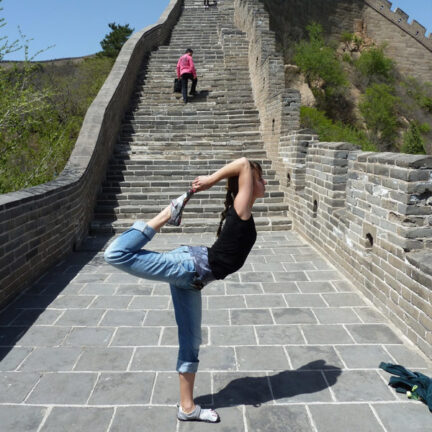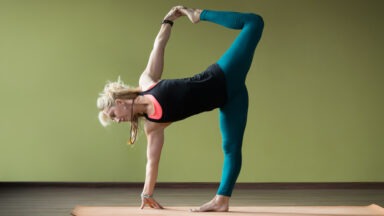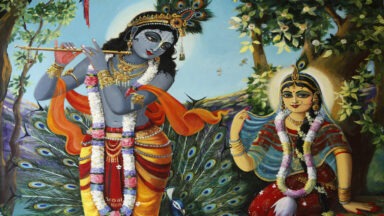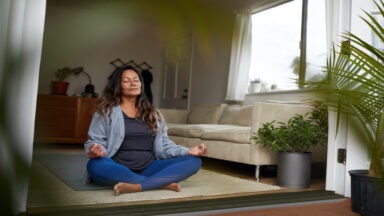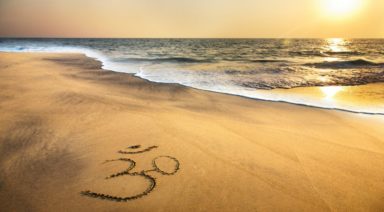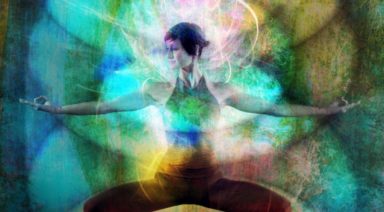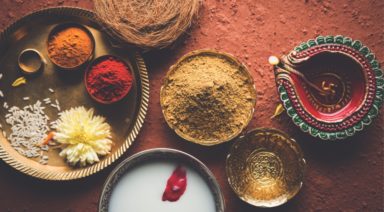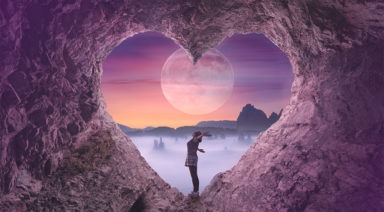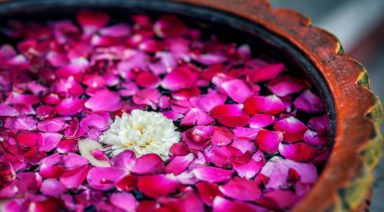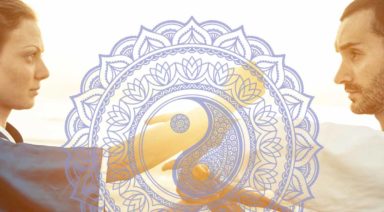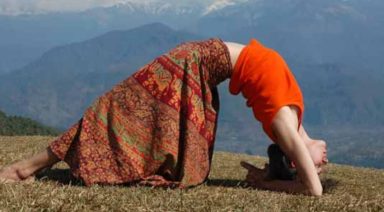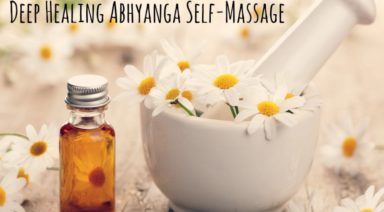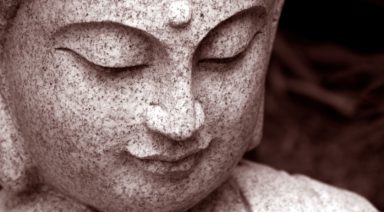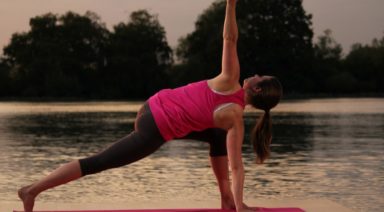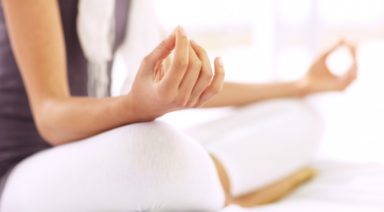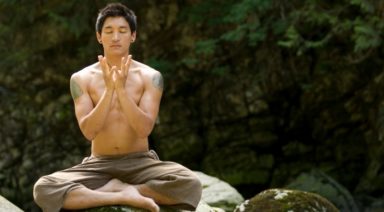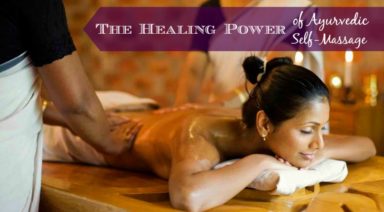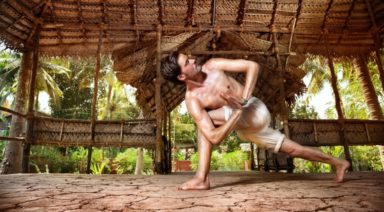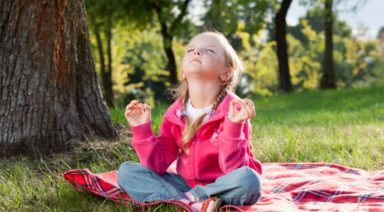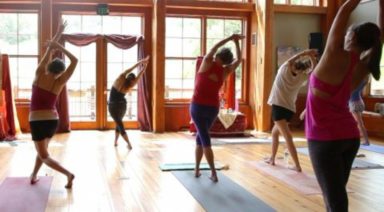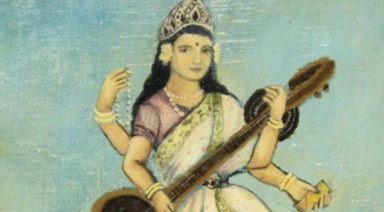Honoring the Ancient Traditions of Yoga

Paying respect to traditions gives us a sense of our roots, our heritage and a sense of being. We follow tradition because for centuries our ancestors have followed the ways that encapsulate the meaning of life and how to be free of suffering caused by uncertainty and trudging down dark paths. But tradition has many faces. It doesn’t always capture the best of us. There are those who cling to traditions and refuse change, while there are those who fear traditions that are unfamiliar from their own. With the world being increasingly cross-cultural, traditions of all sorts are being exposed to many reaches of the earth. In their travel they are becoming transformed. Through their transformation, we have to find a bridge that allows for us to protect the integrity of the tradition within the roots of their purpose.
Yoga is one of these traditions. It’s origins are rooted in the soils of the Indus Valley, beneath the Himalayan Mountains, what is Northern India and Pakistan today. It’s traditions so ancient, that it’s claimed to have been practiced since the beginning of civilization. Through internationalism, the seeds of yoga have scattered, blown in the wind and spread to those who seek light. Yoga now touches upon the lives of people all over the world.
Yet the traditions of yoga have altered significantly, in their travels from South Asia. In the West, people flock to 40.6 degree Celsius rooms, to sweat it out in a session of Bikram’s hot yoga, or work their core in power vinyasa yoga classes that focus on asanas, or physical postures of yoga combined with fitness. The roots of yoga, the mantras, the Om, breathing techniques, pranayama, and the intentions of finding inner peace, and stilling the mind to single-pointed concentration in meditation are foregone in the mist of vanity to achieve one’s ideal body type.
When the tradition has diverted so far from its roots, then what do you call its modern variation? Is it time for the traditions to shift with the modern currents?
If you travel to the Himalayan regions of India or Nepal and take a yoga class, you will experience how the traditions have modernized in its birthplace. Classes are conducted with an opening mantra, an Om, and an intention, then proceeded by a series of asanas, or poses, followed by a lengthy savasana. Sometimes the class begins or concludes with pranayama, breathing exercises, and then a final meditation to use the benefits of the physical practice in stilling the body to ease into the mental practice. The local yoga instructors have been practicing as a part of their culture, their heritage. They probably woke up at 3 or 4am to do their own practice before the sun rose, and established their own equilibrium before teaching the class that you participate in. Your class isn’t glistening with brand names, like Lululemon or prAna. It’s simple. You might even find yourself on a rooftop, with the monsoon pounding it’s way in through the makeshift roof made of tarpaulin, spraying you occasionally with rain as you press into adho mukha svanasana, or downward facing dog. But you feel the wind on your face, and outside is a sea of green fields.
In the West, the yogic experience differs depending on where you practice and who you practice with. Classes are more focused on the anatomy, which is safer than in India where you’ll be put into headstands and shoulder stands without caution. Sometimes there are real gems out there, where you get the mix of modern Western and classical Eastern traditions. The class will begin with a centering, focus on the breath, an Om you can join into, a sequence of poses that gets your heart pumping while simultaneously bringing you into yourself and connecting to the core of your being. Then a calming savasana, and a final centering that reflects on the intentions of the class. These classes exist. The music played during class may not be a traditional method, but traditions can change, as long as the intention remains.
The next time you step into a yoga class, be mindful. Leave your ego at the door, and explore yourself in the ancient tradition of connecting the body and mind. Be aware of the poses that open up that connection, and go inward. The hand foot bond to the mat should be all that matters, not the mirror in the room, or the person next to you. Let go and chant Om – there’s a reason it’s called the eternal sound. Lose yourself in the history of movement and discover how it makes you feel. You will never know until you try. Yoga is a tradition of self-discovery through seeking this connection.
Finding Tradition through Intention
The origins of yoga comes from Sanskrit, to yoke, or union. This is the intention of the practice. It can be done through chanting, breathing, meditating, or physical movement. Whatever form of yoga you practice, if your intention is to create a union of the body and mind with the true nature of yourself, then you are following the roots of the yoga tradition. It doesn’t matter if you use modern music to carry you through your practice, if you laugh, sweat and shake, call the poses by their Sanskrit, or locally invented name, if your intention is pure then you are amongst the traditions of yoga. Find your path and allow yoga to become your teacher as you explore its roots, and find a tradition that remains alive and intact in each of us.
“By Yoga, Yoga must be known; Through Yoga, Yoga advances; He who cares for Yoga, In Yoga rests forever.” (Unknown source)
10 Ways Yoga Practice Can Lessen Your Holiday Stress

There is no better time to take your yoga practice “off the mat and into your life” than over the holidays! Whether you are a new student of yoga asana (movement) or a seasoned yogi, here’s a handy guide for using all the tools at your disposal–including breath, movement, and mindfulness–to limit stress and maximize happiness in the coming months:
1. Stay healthy.
Chronic health issues often flare up over the holidays, so don’t forget to use your yoga practice as preventive medicine. Keep persistent symptoms at bay with a daily dose of yoga. Drain your lymphatic system and increase blood circulation through postures and movement.
Try combating infections and colds by opening up your chest with a gentle fish, bridge, or bow pose. Don’t skimp on your yoga just because you are busy! Everyone has time for a quick round of sun salutations in the morning, a few standing forward bends at lunch, or some breathing techniques before bed–no mat or props needed. Remember the old saying: An ounce of prevention is worth a pound of cure. Were they talking about yoga?
2. Be worry-free
“I’m so stressed out. My mind is racing. Everything seems overwhelming. I just can’t stop thinking!” Are anxious feelings wearing down your holiday spirit? Politely excuse yourself from the party; turn off the computer – just take a break. Find a quiet, peaceful spot for some yogic mantra or meditation. You can quickly detach from worrisome thoughts by focusing on the individual sounds of the mantra or by simply following the breath – in and out.
Sometimes a longer exhalation or pausing at the end of your out-breath can calm a speedy mind. If time permits, do some asanas – child’s pose to really let go, balancing poses (like tree pose) to connect to earth and sky, or toe squat to stretch your feet and take the focus out of your mind and into your body. A restorative yoga session can be an hour well spent; your worries will literally melt into the mat and leave you feeling clear and refreshed.
3. Increase your concentration.
As if your life isn’t hectic enough, add in holidays with extended family, shopping, school recitals, the annual office party; the list goes on! All these distractions can wreak havoc on our memory, concentration, and problem-solving. In order to stay productive, incorporate asanas that increase mental focus–like warrior I, II, III, dancer’s pose, eagle pose, or shoulder stand–into your practice. Activate your tired brain with a series of breathing exercises. You can do them anywhere, anytime, seated or standing.
Really crunched for time? Take a few moments sitting in a comfortable seat (eyes closed or with an unfocused gaze), or stand in mountain pose with your hands in anjali mudra (palms together in front of your chest). The simple act of remaining still with palms pressed together can help bring you back to your center.
4. Keep your body toned and fit.
Maybe you’ve done one yoga class, maybe one thousand. No matter your strength, flexibility, muscle tone, core stabilization, balance, cardio health, enhanced athletic performance–the benefits of yoga become apparent with that very first stretch or twist. You might have a consistent practice when November rolls around. Suddenly there’s no time to cook dinner, let alone squeeze in an entire yoga series.
What to do? Do something rather than nothing! Try adding a few minutes of yoga before or after a workout, run or walk. Strike a few powerful poses before the kids get up in the morning, or discretely activate your core with tummy toning exercises while sitting on the couch. During the holiday season, concentrate on the target areas most important to you, and the rest can wait. If you need shoulders flexibility, keep up your downward dogs; if your spine is an issue, don’t skimp on back-bends, forward bends, and twists; if tricep strength is what you’re after, practice chaturangas as often as you can during your yoga flow.
5. Keep your weight stable
Everyone knows a good yoga series burns calories, builds muscle, and provides your body with a systematic, holistic workout. More importantly, yoga practice helps you make friends with your body. This is no small statement. When you know your body, you eat more consciously, recognizing the difference between a food craving and actual hunger. You make more sensible food choices, and intuitively eat less because you know when you are actually full.
Over the holidays, even our most thoughtful meal planning can be disrupted, it’s hard to say no to grandma’s pumpkin pie, or your cousin might be eyeing your dinner plate to see if you’ve eaten all his homemade mashed potatoes. Try keeping your “yogi mind” at family dinners. Stay centered, drink plenty of water, and don’t forget to breathe deeply when you feel stressed or overwhelmed. You can also practice cardio yoga styles during the holidays– power vinyasa, warm or hot flow, sculpt with weights–to get maximum aerobic benefits in the shortest amount of time.
6. Lift your mood and maintain a positive outlook.
Yoga practice is a great way to boost sagging spirits and tame your depression. Yoga raises your heart rate and gets the blood flowing throughout the body.
If you are feeling blue, try stretching your arms overhead and spreading your toes wide in a simple raised arm mountain pose. Backbend in bridge or cobra, opening your chest, rib-cage, and heart. Any inversion that gets your head lower than your heart–supported headstand, legs-up-the-wall pose, shoulder stand, or handstand–can have a positive effect on mood. If the holidays have really got you down, remember to take care of yourself.
Relax and rejuvenate in your favorite restorative pose; don’t skimp on any blankets or props needed for extra comfort. For mental stimulation, use a breathing exercise like bellow’s breath to stir your prana – it’s better than a cup of coffee! Let your yoga practice serve as a physical reminder that your mood won’t stay low forever. Change happens all by itself if you stay on your mat, breath, and follow the sequence of poses.
7. Sleep more
Work is stressful and your parents are coming for an extended holiday stay. You’re worried and anxious so it’s hard to fall asleep. You toss and turn all night, and now you’re cranky and irritated at breakfast. The sleep deprivation cycle begins and with it all the troubling symptoms; insomnia, exhaustion, overstimulated nervous system, chronic stress, sensory overload, muscle tightening, tension headaches, and more.
How can yoga help? Get in a rigorous session during the day, so your body is tired by nightfall, or try a gentle yoga series before bed. Deep exhalations allow your nervous system to relax and your breathing to slow down. Use poses that relieve physical tension such as spinal twists (seated or supine), plow, or a gentle forward fold (let your head hang). Turn out the lights, turn off the day. Climb into bed and let it all go with a final savasana.
8. Improve your vitality and energy
What happens when you follow a sequence of yoga movements choreographed to the rhythm of your breath? Your blood flow increases, more oxygen gets delivered to your cells and tissues, red blood cell and hemoglobin counts rise. You feel rejuvenated. What about when you’re tired? A series of sun salutations can warm and stimulate both the body and the mind. Chair and eagle are also energizing poses you can do anytime; hold them longer to generate more heat and internal energy.
Be sure to make an extra effort to keep your yoga practice going over the holidays; you’ll be rewarded with more vibrancy and stamina to enjoy the whole winter season. Did you overindulge in turkey, stuffing or green bean casserole at Thanksgiving dinner? You’re not alone. Intestinal symptoms like indigestion, acid reflux, bloating and constipation can sap your energy. Wind removing pose (wide leg, legs together, or one leg at a time to target different segments of your colon), twisting poses (to massage your abdomen), reclining bound angle pose (for all your abdominal organs), or some gentle cat-cow movements can offer instant relief for intestinal distress.
9. Maintain your mind-body connection
First, you cut your thumb chopping walnuts for the holiday cookies. Then you trip in your new high heels, twisting your ankle, and minutes later you spill wine on the carpet. Why are we so clumsy and accident-prone during the holiday season? Blame it on the stress- feeling overwhelmed can make you move too fast, lose your mind-body connection, and react with a fight-or-flight response to ordinary situations.
After bandaging your thumb, soaking your ankle, and cleaning the wine stain, cut the cycle of mindlessness- come back to your yoga! Try breathing exercises, balancing poses, or seated meditation. The mindfulness coupled with the physical embodiment your yoga brings can help you recover faster, protect you from further injury, improve your coordination and reaction time, and help you balance better (especially in those heels).
10. Be centered, present, and in the moment
Your commitment to yoga practice is the most precious gift you can give to yourself. Don’t hesitate to use all of your yoga tools– breath, movement, and mindfulness– to keep your holiday season stress-free. Enjoy. Appreciate. Celebrate. Mourn. Rejoice. Connect. Forgive. Extend. Radiate. When you are centered, present, and in the moment, you can give and receive, love and be loved, touch and be touched back. Happy Holidays and Happy Yoga.

